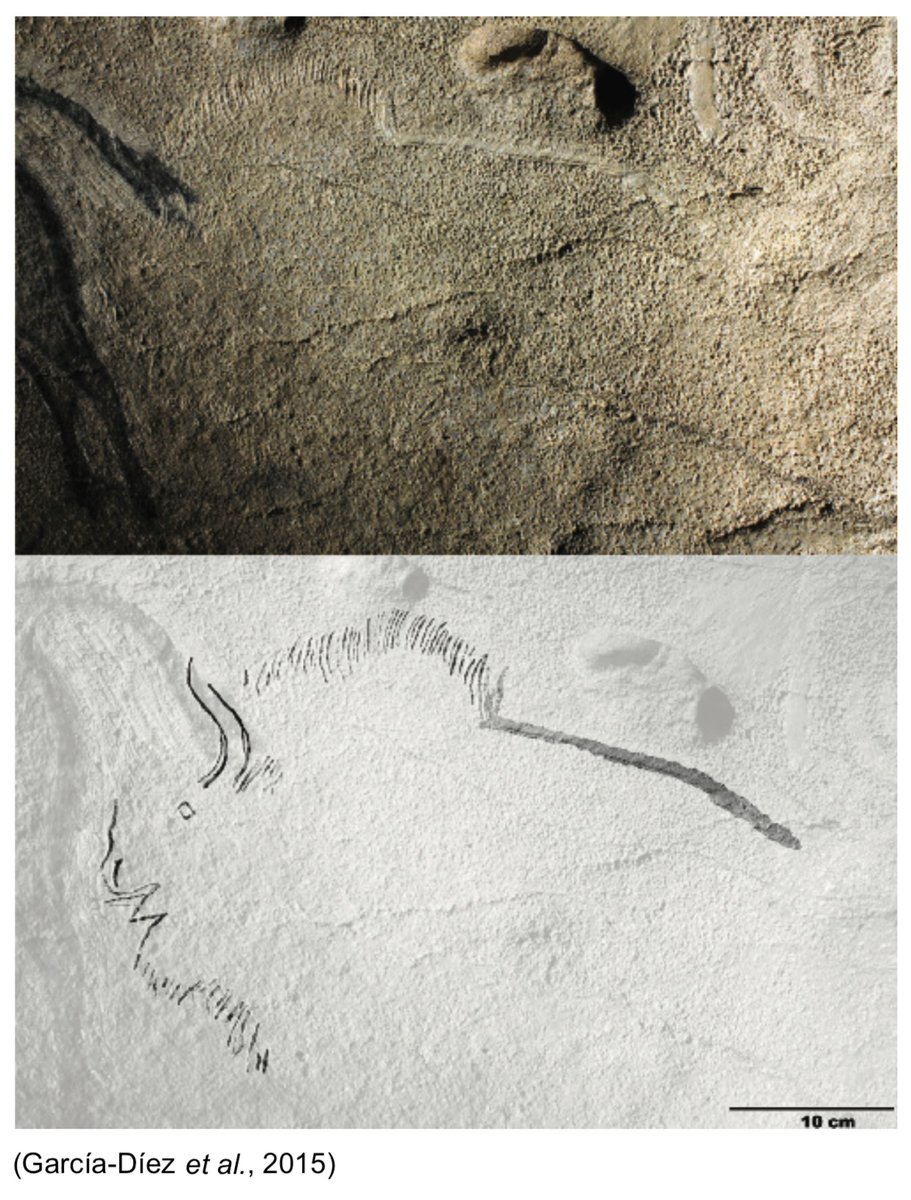
☕️Good morning to all! In today’s first #FridayPaleoArt of #October1st we are going to look for the prehistoric hunters through Paleolithic art.
Cave: #PechMerle
Place: Cabrerets, Lot, Francia
Motif: Wounded Man. Gallery of the Wounded Man
Chronology: Possibly #Solutrean
👇😉
Cave: #PechMerle
Place: Cabrerets, Lot, Francia
Motif: Wounded Man. Gallery of the Wounded Man
Chronology: Possibly #Solutrean
👇😉

Today we are going to visit a well-known cave for its great animal representations, especially the spotted horses, but what about the humans? 

Although this cave was known to locals, it was not until 1922 that the speleologist A. David, his sister Martha and Henri Dutertre, discovered the so-called “decorated cave.” Later, the parietal study was carried out by A. Lemozi, A. Leroi-Gourhan and M. Lorblanchet. 

⁉️The number of anthropomorphic representations in Paleolithic art is quite scarce. Within the male anthropomorphic imaginary we can find several distinct groups such as phallic representations or sorcerers and semi-animals. One of these groups is the wounded men.
📚With 75 cm high it is one of the largest and clearest images of men and hunting. In it we see a man in a horizontal position whose body is crossed by several lines. 

➡️It has been interpreted as a wounded or dead man pierced by multiple spears, although other researchers have wanted to see in those lines the jets of blood coming out of his body. Therefore, an attempt has been made to connect the world of birds with that of death.
❗️The bird-shaped signs within the same scene stands out. There are other similar 11 signs painted in Cougnac, 3 in Pech Merle and 7 more engraved in Grotte du Placard, because of their large presence in the latter cave they are also called Placard signs. Possibly #Solutrean.
📖Other examples of this iconography can be found in the caves of Villars, Lascaux, Cosquer or Cougnac. This could be understood as a regional issue as it has only been found in French caves. 

➡️On the other hand, we can find men confronted with large animals such as bison or horses, in scenes of confrontation during the hunt. One such example is the famous scene in Lascaux, where the phallic theme, the animal confrontation and the wounded or dead man are intertwined. 

I hope you enjoyed this curious subject. Don’t forget that Pech-Merle Cave can be visited, but if you can’t go don’t worry because we have the possibility to do it virtually through: pechmerle.com/le-centre-de-p…
V. Fernández-Navarro (@veronicart24)
See you next week!👋😉
V. Fernández-Navarro (@veronicart24)
See you next week!👋😉
• • •
Missing some Tweet in this thread? You can try to
force a refresh





























